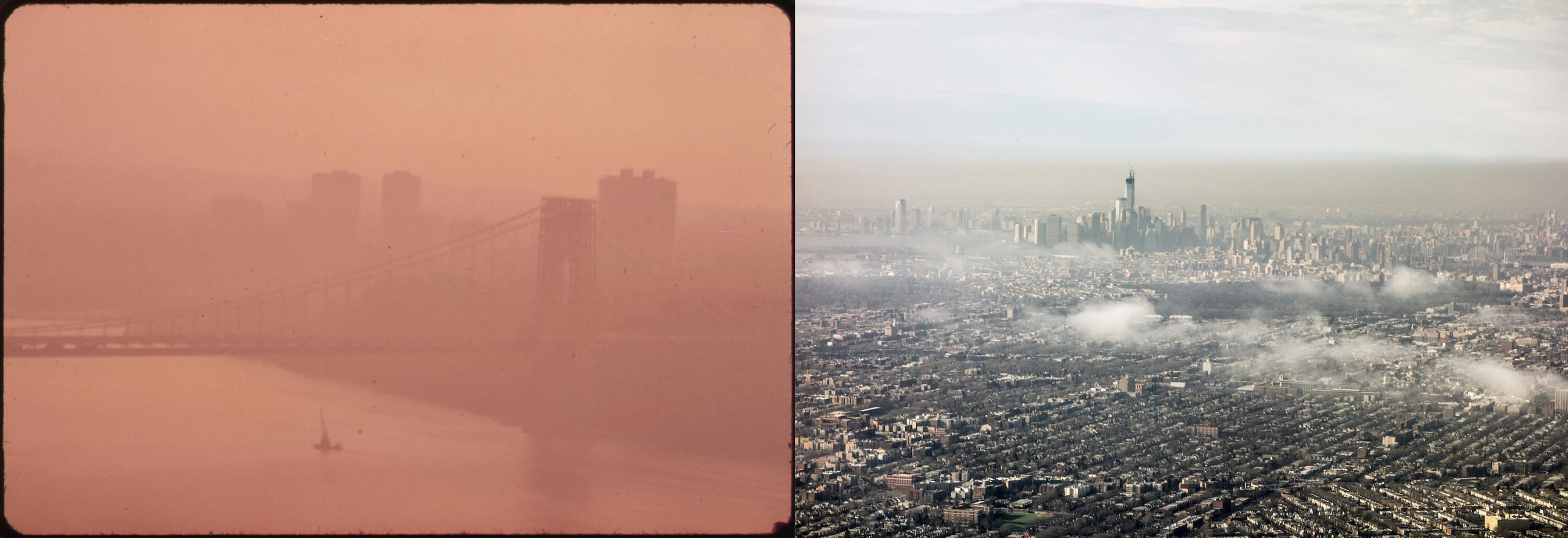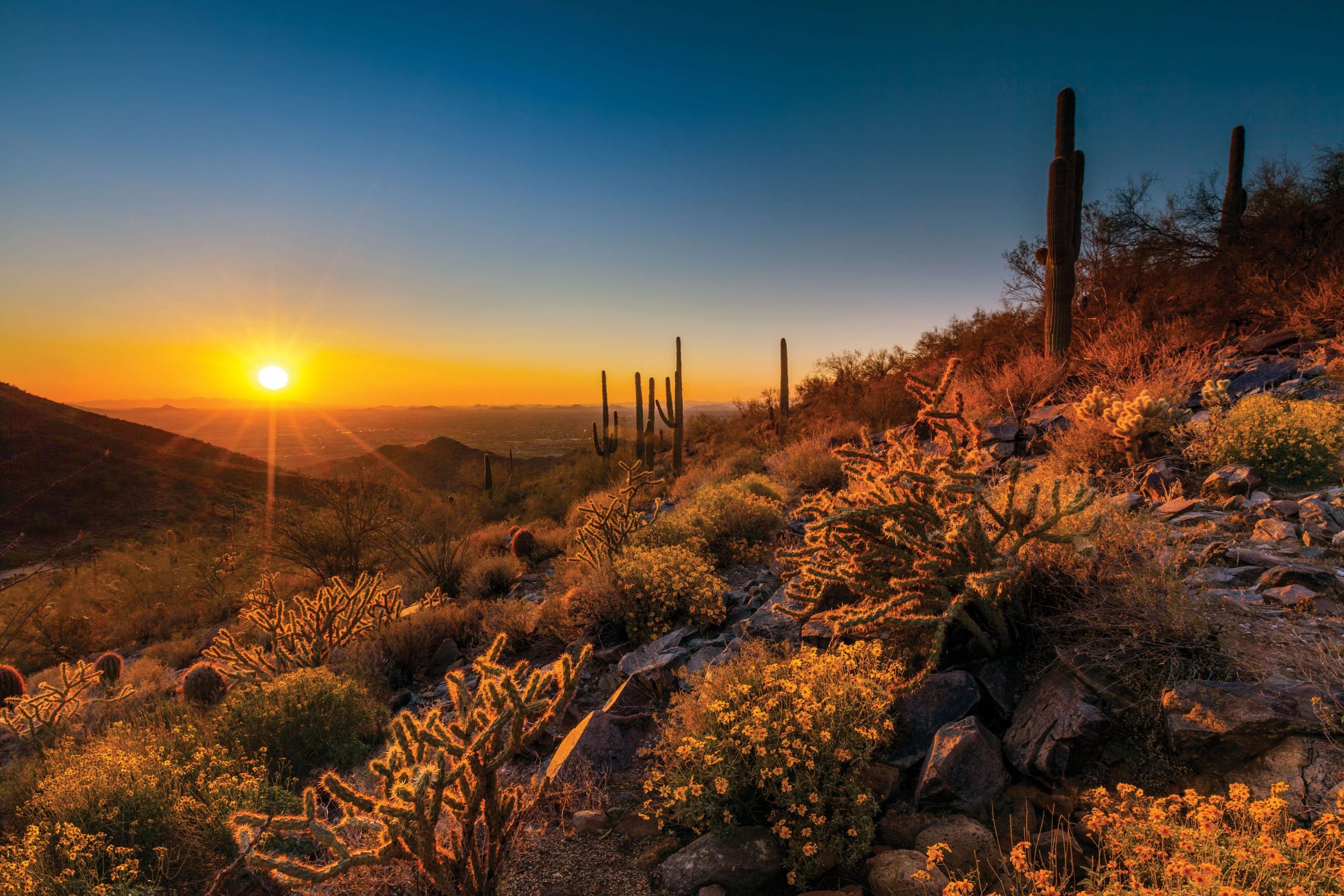
In June 1969, the Cuyahoga River near Cleveland, Ohio, spontaneously burned as chemical contaminants had been dumped into it for years. Earlier that year in January, on the other side of the nation, an offshore rig near Santa Barbara,
California, spilled millions of gallons of oil onto the beaches. Earlier still, in 1962, Rachel Carson’s dystopian Silent Spring envisioned that season without birdsong—a result of the wide use of DDT and other pesticides and chemicals.
Toxic waste all over the country
As these disaster headlines appeared, other areas were preparing for their bold type in the next decade. In Bullitt County, Kentucky, a 23-acre site near Louisville had become a choice spot for dumping toxic-waste drums filled with heavy metal, polychlorinated biphenyls, and a 100-plus other chemicals; these deadly fluids were leaching down into the water table. Later known as “The Valley of the Drums,” the site moniker wryly echoed the title of the Valley of the Dolls, the 1966 bestseller by author Jacqueline Susann.
About the same time, in upstate New York, near now National Heritage Site Niagara Falls, chemically toxic water was seeping into homeowners’ backyards and homes. This was Love Canal, which, paradoxically, had been envisioned as an ideal community in the late-19th-century. Again, buried drums were leaking poisons such as dioxin into the land and water. Cancer rates were abnormally high as well as pregnancies ending with miscarriages; people died.
In the early 1980s, Times Beach, Missouri, followed—the largest civilian exposure to dioxin in the nation’s history. Until the area was remediated as a state park celebrating Route 66, the once residential area was a ghost town.
What had happened in just a hundred years to the New World of promise and redemption from the Old World? How had we so quickly sullied the America of people as diverse as Camden, New Jersey’s Walt Whitman, Harvard-educated
Henry David Thoreau at Walden in New England, and Scottish immigrant John Muir studying the grand Yosemite Valley in California? American skies were clouded from smoke stacks and automobile exhausts. Our rivers could catch fire; today’s tide might bring in waves carrying oil, not surfers, to shore.
Americans needed to act.
Celebrate, legislate, administrate
Fifty years ago, in 1970, the nation did, with two similarly focused events: the populist Earth Day and the formation of the Environmental Protection Agency (EPA). On April 22, approximately a quarter of a million people gathered in Washington, D.C., as Congress adjourned for the day, and many representatives and senators spoke at Earth Day rallies nationwide. In New York City, 100,000 people marched along Fifth Avenue. In nearby Philadelphia, people joined together in Fairmont Park to celebrate the bounty and sanctity of Earth.
In varying degrees of fervor since, the commemorations have continued, although this year’s activities will be curtailed by the COVID-19 worldwide pandemic.
NEPA
Following the enactment of The National Environmental Policy Act of 1969 (NEPA) and an executive order by President Richard Nixon, the EPA came into being on Dec. 2, 1970, consolidating disparate federal agencies. Individual environmental departments followed at the state level, including the Arizona Department of Environmental Quality, created by the Legislature in 1987.
The mission of the EPA is to protect human health and the environment through regulation issuance, environmental assessment, monitoring, research, standard setting, enforcement, education and grants. By enforcing laws set by Congress, the agency, with more than 15,000 employees, works with state, tribal and local governments to ensure that Americans are protected from environmental risks at their homes, schools, workplaces, and public areas.
The current EPA administrator, appointed by the president and confirmed by the Senate, is Andrew R. Wheeler. His deputy administrator and assistant administrators are similarly appointed and confirmed.

The EPA’s Region 9 office
Headquartered in Washington, D.C., the EPA comprises ten geographic offices. Region 9, the Pacific Southwest Region, serves Arizona, California, Hawaii, Nevada, the U.S. Pacific Island territories, and 148 Native American tribes including the Navajo Nation in northeast Arizona.
Its regional administrator is John Busterud, an environmental and energy attorney and retired U.S. Army colonel with 30-plus years in the environmental industry. He
was selected and appointed through a collaborative process between the EPA administrator and the president.
For him, five acts are fundamental achievements during the EPA’s first 50 years.
First, through the Clean Air Act of 1970, the EPA works with the states to reduce air pollution with programs based on rigorously gathered data and the latest science. “These actions have achieved dramatic reductions in air pollution, particularly here in the Pacific Southwest Region, preventing hundreds of thousands of cases of serious health effects each year,” Busterud says.
Also in 1972, The Clean Water Act, originally the Federal Water Pollution Control Amendments of 1972, established regulations for discharges of pollutants into U.S. waters and quality standards for surface waters, and EPA implemented control programs such as setting industry wastewater standards. In addition, the EPA also developed water quality recommendations for pollutants in surface waters.
The Safe Drinking Water Act
Two years later, The Safe Drinking Water Act established protective drinking water standards for more than 90 potential contaminants.
In 1976, The Federal Insecticide, Fungicide, and Rodenticide Act gave EPA the authority, both in intrastate and interstate commerce, to regulate the registration, distribution, sale, and use of pesticides. The law applies to all types of pesticides, including insecticides, herbicides, fungicides, rodenticides, antimicrobials, and devices.
And, greatly stimulated by public response to the Valley of the Drums and Love Canal exposés, The Comprehensive Environmental Response, Compensation, and Liability Act, also known as “CERCLA” or “Superfund,” was passed by Congress in 1980.
For these closed and abandoned hazardous waste sites, CERCLA imposed responsibility on the persons or companies responsible, and designated the EPA as the oversight authority.
National Priorities List
The act also created a cleanup trust when a responsible party could not be found.
Love Canal, Valley of the Drums and Times Beach were all addressed by Superfund, although the total effectiveness is still questioned by some. The National Priorities List continually updates.
“I believe Administrator Ruckelshaus would be proud of what we have accomplished with our state and tribal partners over the past 50 years,” Busterud says. “As a country, we have made remarkable strides in ensuring a clean environment for all citizens. We have made tremendous progress in providing clean and safe water across the country.”
In the 1970s, more than 40 percent of the nation’s drinking water systems failed to meet even the most basic health-based standards. Today more than 93 percent of community water systems meet them, he explains. The U.S. has also been a leader in cleaning the air. The EPA reports that between 1990 and 2018, air pollutants that it monitors have significantly decreased: ground-level ozone, 21 percent; sulfur dioxide, 89 percent; nitrogen dioxide, at least 50 percent; and carbon monoxide, 74 percent. And, between 2000 and 2018, fine particulate matter fell by at least 34 percent. And, with Superfund, contaminated lands are being cleaned at the fastest pace in more than a decade, Busterud says, noting that in fiscal year 2019 alone, the EPA deleted 27 Superfund sites, the largest number since fiscal year 2001.
“By far the major achievements of the EPA are in ratcheting down levels of water and air pollution over 50 years,” says Noah Sachs, professor, University of Richmond
School of Law and director of the Merhige Center for Environmental Studies. “There has been dramatic improvement in environmental quality and public health. In terms of just the Clean Air Act, hundreds of thousands of premature deaths from air pollution have been avoided.”
Criticisms and challenges
Still, the agency has encountered criticism. As Sachs says, “The EPA is often called the federal agency no one likes to be the head of because it’s a punching bag for every interest, from the left to the right.”
The Sierra Club throws a right, the energy companies a few uppercuts.
“The EPA has done quite well on the topics we as a nation have chosen to shine a spotlight on: clean air and water and Superfund. But in the areas where there is no strong federal legislation, the environmental problems get worse, areas like poor land-use choices, hidden fossil-fuel subsidies to give to energy companies, our continuing dependence on coal for electricity and, in particular, climate change.”
Behind the times
He adds that these are not so much EPA failures but broad national ones. Climate change, in particular, Sachs calls “the defining issue of the 21st century, yet we do not have an American climate change law to address issues such as transforming our energy system and adapting our coastlines for rising sea levels.”
Even though the early Ruckelshaus EPA consolidated a variety of environmental programs from other departments, today’s organization is still not as unified
as it might be for the public welfare, Sachs explains. “We have EPA media-specific offices for air, water, solid and hazardous wastes. We have an environmental agency that is not holistic.”
One example: “We try to handle water pollution by taking constituents out of discharged water before it hits our rivers and streams, but those constituents are often sent to landfills and buried. We’re lacking coordination among these offices.”
So, too, this is a vastly underfunded agency, given the broad geography it is assigned as well as the spectrum of environmental sectors it is responsible for. The first budget Ruckelshaus was given, October 1, 1970, through September 30, 1971, was just beyond $1 billion. Now, 50 years later, the 2019 budget is only $8.85 billion, hardly equal to the challenges the agency must deal with.
And, as Sachs notes, “Much of this money is given to states and localities through grant programs, and what’s available for implementing environmental laws is smaller. The EPA needs an increased budget to do its task effectively.”
Downfall of changing administrations
Perhaps most tellingly, the agency has been weakened by its dependency on the changes of administrations and administrators, some with EPA agendas that were neither environmental nor protective.
“In the last 50 years, the EPA has shown it can get a lot done when it has effective, committed administrators not afraid to use the tools that have been given to them,” he says.
Sachs takes as an example the George W. Bush administration, which fought the idea that greenhouse gasses could be regulated under the Clean Air Act. But the Supreme Court’s 2007 ruling in Massachusetts vs. EPA disagreed and confirmed that the EPA did have that authority.
“We had to wait for President Barack Obama to implement that decision.
“On climate change, in particular, the science was there in the 1990s, and the EPA under Presidents Bill Clinton and George W. Bush could have acted sooner. And now the Trump Administration is trying to roll back the handful of Obama-era
regulations on climate change as part of a rollback effort that includes about 90 environmental regulations in total.”
ELMS
Busterud notes that the EPA is committed to continuous improvement. Its EPA Lean Management System (ELMS), for example, facilitates self-review and solution-making on issues that need to be addressed.
As a whole, the EPA will continue to focus on addressing challenges such as reducing lead exposure, investing in the nation’s water infrastructure and improving our recycling system, he explains.
In the Pacific Southwest, his priorities include addressing transboundary pollution challenges, remediating Superfund sites, supporting communities in cleaning up and reusing brownfield sites, taking action on perfluoroalkyl and polyfluoroalkyl substances (PFAS), addressing critical water issues including algal blooms and ocean pollution, and helping fund water-infrastructure projects.
“In Region 9, we approach these challenges as opportunities to work with our tribal, state and Pacific Island partners to serve the public,” he says.
Why some laws have security from being repealed
Fortunately, Sachs continues, despite rightward shifts in the past 50 years—President Ronald Reagan, in the 1980s, and the Newt Gingrich-led Republican Congress, in the mid-1990s, are other examples—Congress has never seriously considered repealing the core environmental laws such as the Clean Water Act.
“And that should be seen as a victory,” he says.
For one, industry has adapted to these laws, making the capital investments to comply, and still been profitable, he notes. Secondly, public opinion, across both political parties, has continued to overwhelmingly support the broad goal of
maintaining clean air and clean water in the United States. “It’s when you dig deeper, getting into questions of how we pay for it and what sacrifices industry should make, and when pollsters ask questions about climate change, that’s when you get polarization,” Sachs says.
Part of this continuing support is in the American spirit: the love of nature exemplified in the writings of Emerson and Thoreau and the glorious Western paintings by Moran and others; the support for national parks by President Theodore Roosevelt, a Republican, and the law establishing them signed by President Woodrow Wilson, a Democrat; the dedication of Ruckelshaus, a Nixon Republican appointee, and William Reilly, a President George H.W. Bush-appointed Republican and career environmentalist. Red or blue, either side of the aisle, everyone wants clear skies and clean water.
Despite these embedded American sentiments and wide support for the EPA, its future is dependent on the American people—to express themselves through their congressional representatives. The EPA can only do what Congress gives it the authority to do. “If we want to have a more effective EPA,” Sachs says, “Congress has to give it the tools for 21st-century problems.”
For an explanation of the laws and executive orders EPA is charged with implementing all or a portion of, visit here. The writer thanks EPA Region
9 Administrator Busterud and PIO Denise Adamic and Professor Sachs for their helpfulness in providing material for this article.

Scottsdale’s McDowell Sonoran Preserve at sunset. Photo by Tom Mackie for Experience Scottsdale.
Keep up with all of Green Living’s content by visiting our website.
David Brown is a Valley-based freelancer (www.azwriter.com).






